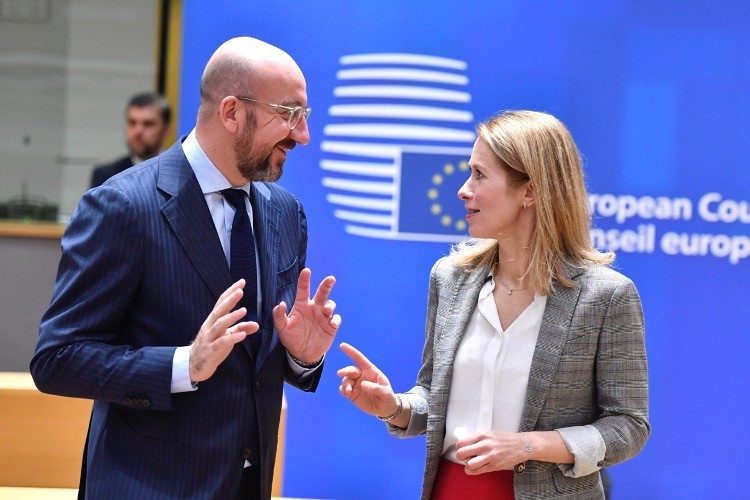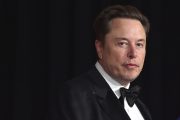
Diplomats from various European Union (EU) member states and EU officials revealed that the Baltic state of Estonia had ruffled some feathers in Brussels with the degree to which it has claimed back the costs of new military equipment instead of the actual value of arms deployed to Ukraine, according to Politico.
The monetary reimbursement of EU member states for the arms they deploy to Ukraine via the European Peace Facility (EPF) has been one of the tenets of the EU’s landmark arms-procurement program to aid Ukraine and concurrently refill NATO stocks. The EPF is a joint defense fund that all member countries have to contribute to, according to the scale of their economies.
However, friction is escalating in Brussels as various member states — particularly those who contribute the majority of the EPF funds — are getting rattled at other states who seem to be abusing the EPF system. Although no official denunciations were made to avoid splintering a fragile European unity in backing Ukraine, some diplomats expressed annoyance behind closed doors.
Notably, the deal agreed on by the Council of Europe set the same rate of reimbursement (84 percent of the price paid) for all participating member states, but it failed to indicate how countries should calculate the procurement price of the weaponry they send out. Thus, each country could use its own accounting to calculate value of arms sent to Ukraine.
Such a loophole would technically permit member states to send Ukraine older weapon systems in exchange for the present price of the most updated version. Also, member states could use the gaps in the system to overhaul their military arsenal at a discounted price, at the expense of other EU member states.
Six countries were singled out to have been abusing the reimbursement system this way. The list included Finland (wanting all its donations to be reimbursed in the current purchasing price rather than their actual value), followed by Latvia (claiming 99 percent in current price), Lithuania (93 percent), Estonia (91 percent), France (71 percent), and Sweden (26 percent).
Nonetheless, Estonia topped the list in absolute figures, asking for €161 million for its prior weapons donations to Ukraine — a figure that exceeded those of all the above-mentioned member states combined. If we were to use the common EPF rate to calculate, the EU would have to reimburse Estonia a sum of almost €135 million.
“They are sending their scraps to Ukraine and buying brand new material for themselves, financed with EU money,” one frustrated EU diplomat complained to Politico.
Furthermore, another diplomat slammed Estonia’s behavior as a “particularly blatant case” of abuse, adding:
What the Estonians do is, they send old material, which is no longer in production, and then ask for reimbursement [based on the price of] modern alternatives. For example, they have sent Strelas [old Soviet shoulder-fired surface-to-air missiles] to Ukraine, but claimed reimbursement for modern Stingers, which of course have more capabilities and command a much higher price. This is also why Estonia’s military support appears to be so much higher per capita than that of other countries in the statistics everybody cites.
What Tallinn’s actions mean is that it is leveraging this chance to revamp its stocks using EU funds instead of domestic assets, Luigi Scazzieri, an analyst from the Centre for European Reform, commented in a statement to DW News.
“Clearly there’s annoyance in some countries at the way Estonia has used the fund,” he said. “Mainly because if everyone used the fund to be reimbursed for new equipment, then the money in the fund would actually run out very, very quickly.”
Scazzieri further asserted that it seems that the rules governing reimbursements have not been adequately clear. “Because the risk is that without clear rules, then you do risk undermining political consensus for what’s been a very important instrument,” he added. Excluding such expenditure from the main budget entails transparency risks, he added.
A January 2023 Estonian government statement indicated that Estonia calculated its aid based on the “recovery value” of donated arms and that it was applying for funds from the EPF for the “replacement of equipment.”
In response to accusations, Estonia’s Defense Ministry retorted, “Estonia has followed EPF rules in determining whether aid given to Ukraine is to be classified as book value or as replacement value.”
Besides, the ministry highlighted that Tallinn had only applied for reimbursement for new equipment after production was discontinued and when they had to replace those stocks.
“Supporting Ukraine is not a competition and its core rationale is not about an EU reimbursement scheme. The stakes are much higher — repelling aggression in 21st century Europe and preserving our security architecture,” the statement concluded.
In addition, Ukraine reinforced its gratitude to Tallinn on Tuesday to seemingly display solidarity. “The Estonian example of investing in Europe’s security is inspiring. Estonia’s military assistance to Ukraine has already surpassed 1% of the country’s GDP,” Ukrainian Defense Minister Oleksii Reznikov tweeted. “Everything we receive from our [Estonian] friends, from javelins to howitzers, helps the [Ukrainian] army defend Ukraine and all of Europe.”
Estonia, which has a population of around 1.4 million and joined the EU and NATO in 2004 together with other former Soviet states, has been widely recognized as one of Ukraine’s most staunch supporters.
The EPF, an off-budget funding system, has around €8 billion following a series of top-ups amid plans to support Ukraine in its conflict with Russia.
In a historic defense policy shift, 27 EU states agreed to use the fund to militarily back Kyiv in 2022 by partially reimbursing member states that tap on their stocks to aid Ukraine.
While EU rules traditionally banned arms purchase via joint funds, the Russo-Ukraine conflict that erupted in February 2022 triggered a policy shift.
Officially, EU bureaucrats and governments usually cited the EPF as an example of the bloc’s unified support for Ukraine as it tried to tackle Russia. “But there have always been tensions behind the scenes, or even very much in public actually, if we look back at the spat about sending tanks,” Scazzieri admitted, alluding to some eastern EU states’ criticisms of Germany for its initial hesitancy to offer Kyiv modern tanks earlier this year.
At the EU Council meeting on March 20 this year, EU officials decided to deliver one million rounds of artillery ammunition to Ukraine over the course of the subsequent year. “We have reached a political consensus to send to Ukraine one million rounds of 155-caliber ammunition,” Estonian Defense Minister Hanno Pevkur said before the Council meeting. “Definitely there are many details still to solve, but for me it is most important that we will conclude these negotiations, and it shows me one thing: if there is a will, there is a way.” Consequently, the EPF would require fresh inflows of money if it is to continue functioning, particularly after this major deal at the EU Council meeting.



